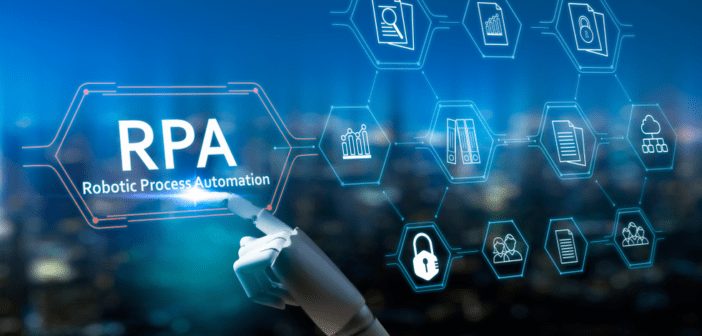
In an uncertain economic environment, businesses are looking for ways to become more competitive and sustainable. Typically, this includes cutting costs wherever possible. Businesses that do so using smart technology can potentially achieve the twin benefits of lower costs and higher productivity, leading to a more successful business overall. Robotic process automation (RPA) has emerged as a key technology that’s helping businesses digitalise work, letting human employees focus on more engaging, creative work, according to Konica Minolta.
RPA is an automation technology designed to work alongside humans to eliminate the need for people to complete necessary but mundane, repetitive tasks. RPA technology is small software apps, known as bots, that are deployed into desktop servers and mimic human activity. They interact with the organisation’s applications through the same user interface as employees. A fleet of RPA bots creates a digital workforce that augments the organisation’s human employees, makes their jobs more enjoyable and varied, and lets them focus on growth-building activities instead of administrative tasks.
According to the Australian Small Business and Family Enterprise Ombudsman, the most common roadblocks for businesses adopting digital initiatives were a fear of technology and not knowing where to start. [1] In many organisations, automation technology has been met with resistance for fear it would take away jobs from people. However, research shows that, in 60 per cent of occupations, at least one-third of activities can be automated. Further, less than five per cent of occupations around the world can be fully automated, proving that skilled workers are still important to every business. [2]
Automation technology has proven its value by creating faster processes, increasing data accuracy, and improving employee productivity. Now, more than ever, businesses need to embrace a digital workforce to improve operations, reduce costs, and redeploy talent to more crucial business tasks.
Seth Butcher, national manager – IT solutions sales, Konica Minolta, said, “COVID-19 has put businesses in a position where digital change needs to happen fast to remain competitive across industries. This presents an opportunity to implement automation technology, like RPA, to build a digital workforce that can improve productivity and employee morale while providing cost benefits, which is particularly important during the recovery stage.”
Konica Minolta has identified four benefits of building a digital workforce with RPA:
1. Improved data accuracy
Human data entry is prone to mistakes, which can result in financial penalties and lost time in finding, rectifying, and resubmitting the process. RPA eliminates errors because data is entered accurately every time. Bots cross-check the data being entered and flag inconsistencies which will then require human intervention.
2. Faster processing speeds
Digital workforces streamline processes that once may have taken employees hours. Bots can complete the same task in a fraction of the time. Once programmed, the digital workforce can complete any task and can work without a break until it’s complete. For example, invoicing procedures and purchase orders (POs) can be created much faster to speed up the product delivery process and payment of suppliers.
3. Increased productivity
Automating repetitive, manual tasks, such as data entry and data collecting, frees up employees’ time to focus on other work. A digital workforce can unlock productivity and creativity, letting human employees dive into deep work, uninterrupted by menial tasks.
4. Reduced costs
With accurate data entry, faster processes, and time for employees to focus on more important duties, a digital workforce can reduce costs for the business. This includes costs arising from human error as well as the time it takes for tasks to be completed. In operations centres, for example, successfully incorporating RPA can reduce costs by 30 to 60 per cent, while also improving the delivery quality of operations. [3]
RPA can even work with legacy systems, meaning that organisations don’t need to change or upgrade processes to benefit.
Seth Butcher said, “Building a digital workforce and leveraging the potential of RPA will transform the way organisations do business as they recover from COVID-19. Interactions with customers, such as invoicing, can be faster and more accurate, while internal operations and employee morale can be improved by removing repetitive tasks which hinder workflow. Consequently, businesses that implement automation technology are likely to reduce costs and improve productivity, leading to a more successful business overall, even in uncertain times.”
References:
[1] https://www.asbfeo.gov.au/news/news-articles/new-figures-show-digitisation-key-driver-small-business-success
[2] https://www.mckinsey.com/featured-insights/future-of-work/jobs-lost-jobs-gained-what-the-future-of-work-will-mean-for-jobs-skills-and-wages#part1
[3] https://www.mckinsey.com/business-functions/operations/our-insights/operations-management-reshaped-by-robotic-automation





